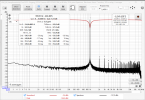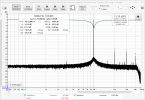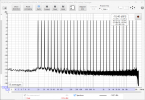I'm afraid that PCM filters won't help. None of them will boost some frequency region.
It's actually funny, a friend of mine always complained the ESS DACs are too bright - he owns one with the ES9038q2m.
Looking at measurements, it's hard to believe that a ES9038 based DAC sounds different compared to eg. a good AKM chip based DAC.
I have heard this complaint "ESS DACs sound too bright" a couple of times and I 'd be very curious if this impression would "survive" blind testing.
In case it does, we will have to think about a new stimulus/analysis technique that can reveal and quantify these audible differences.
Edit: Measurement wise the ESS Hyperstream IV generation (ES9039xxx) has quite some improvements in the SD- modulator compared to the ES9038xxx (Hyperstream II). I would however be impressed if this is audible.
A blog for audiophiles about more objective topics. Measurements of audio gear. Reasonable, realistic, no snakeoil assessment of sound, and equipment.

archimago.blogspot.com
The only recommendation I can give is "get an equaliser"
Honestly, most music I'm listening to has anyway been processed during production - and a slight EQ is a very mild processing to my opinion. I think it is allowed to adjust the sound such that you enjoy the music more - really nothing wrong with this.
The only caveat is that I would need to have different settings for almost every album....




